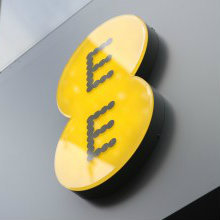EE Revs Mobile Edge Computing Efforts
UK operator EE likes life on the edge – the mobile network edge, that is.
June 19, 2015

UK operator EE plans to run a number of pilots this summer to demonstrate potential use cases for mobile edge computing (MEC), in a move that shows industry momentum continues to build for the radio access network concept.
The operator aims to share the findings from the pilots at an MEC industry event at the end of September, according to EE Director of Radio Access Networks Mansoor Hanif.
EE is a big fan of MEC. Hanif even singled it out as one of the key technologies, along with small cells, in the evolution towards 5G at a press event hosted by Nokia Corp. (NYSE: NOK) in London last week. "I'm really passionate about MEC … because you're putting the computing power and added value right where the customer needs it most," he said. (See DoCoMo & EE Share 5G Visions and Nokia Advances MEC for 5G, IoT.)
For a refresher, MEC puts IT and cloud computing capabilities in the radio access network (RAN) closer to where subscribers are to accelerate the delivery of content, services and applications and also provide access for application developers to real-time radio and network information from the basestation. Nokia introduced the concept when it launched Liquid Applications in February 2013. But the Liquid Applications proposition is only compatible with Nokia basestations. (See NSN: Understanding Liquid Applications, Nokia, Intel Open Apps Innovation Hub and NSN & Intel Get Edgy.)
EE always liked Liquid Applications, according to Hanif. But the big question was "will it work across our whole network?" Since EE has deployed RAN equipment from Huawei Technologies Co. Ltd. as well as Nokia, Hanif explained that the operator couldn't roll out network enhancements to only part of its customer base.
To address this lack of multivendor capability, six operators and vendors launched the MEC initiative and Industry Specifications Group (ISG) within ETSI in October 2014 with the goal of creating a standardized, open environment for applications to run across multivendor MEC platforms. The six founding members are Huawei, IBM Corp. (NYSE: IBM), Intel Corp. (Nasdaq: INTC), Nokia, NTT DoCoMo Inc. (NYSE: DCM) and Vodafone Group plc (NYSE: VOD). The MEC ISG now has more than 30 participants, including EE, and plans to deliver the first specifications by the end of 2016. (See Mobile-Edge Computing Group Gets Going.)
Want to know more about 4G LTE? Check out our dedicated 4G LTE content channel here on Light Reading.
This summer, EE plans to run a number of pilots focusing on five different use cases for MEC, although Hanif did not divulge details about the plans. He pointed to the possibility of deploying the technology in a shopping mall, for example, where consumers could be sent relevant offers from shops based on their location. Another option could be to use the technology in a museum or art gallery to bring the displays to life, so to speak, by sending additional multimedia content to users' devices. The operator sees potential benefits of MEC for enterprise and rural customers as well.
Other use cases identified by the MEC ISG include video analytics, optimized local content distribution, data caching and augmented reality.
From EE's perspective, Hanif said he needs three things right now to make the business case for MEC: compelling use cases to show the investment will be returned; vendor interworking in a single solution; and the ability to show developers they have a single API to work with.
"The biggest struggle will be on the API side," he said. "This is all about opening up the network APIs to third parties to deliver value to our customers."
EE is the UK's largest mobile operator by subscribers, with about 22.3 million mobile connections, and claims to be Europe's largest 4G operator with about 10 million LTE subscribers. It's also in the midst of being acquired by UK incumbent BT Group plc (NYSE: BT; London: BTA). Its pursuit of network innovation like MEC shows how EE is looking to retain its competitive edge by evolving the mobile edge. (See BT Locks Down £12.5B EE Takeover Deal, EE Flags Worst Postpaid Growth in 2 Years and BT, EE Defend $19.9B Merger Plans.)
— Michelle Donegan, contributing editor, special to Light Reading
About the Author(s)
You May Also Like




_International_Software_Products.jpeg?width=300&auto=webp&quality=80&disable=upscale)







